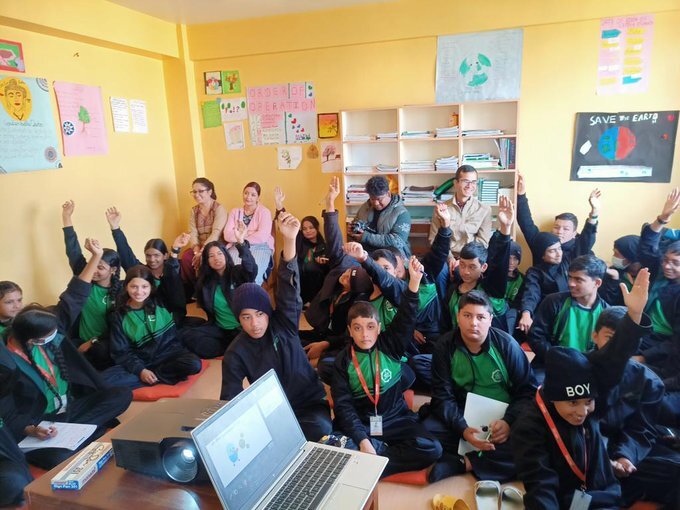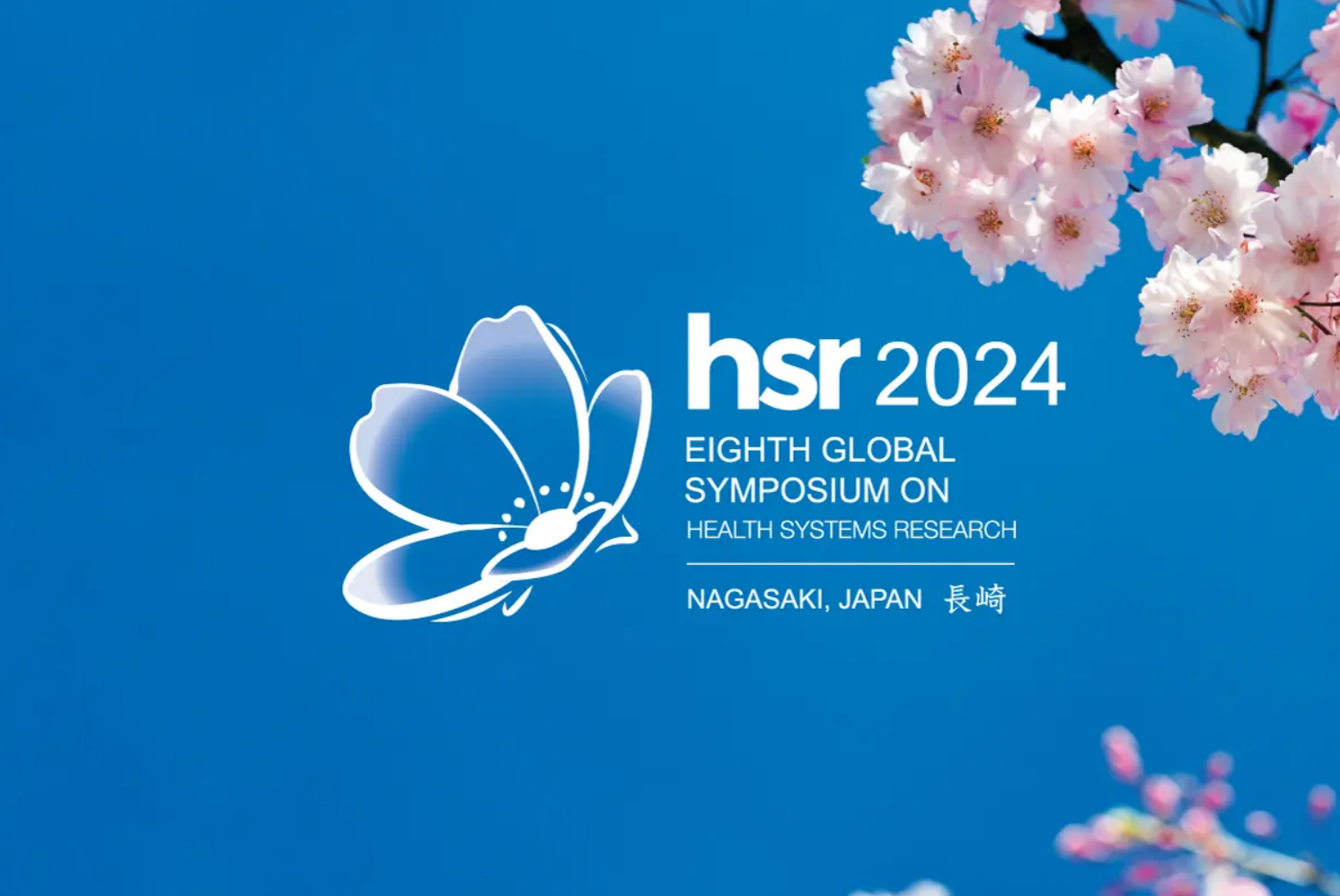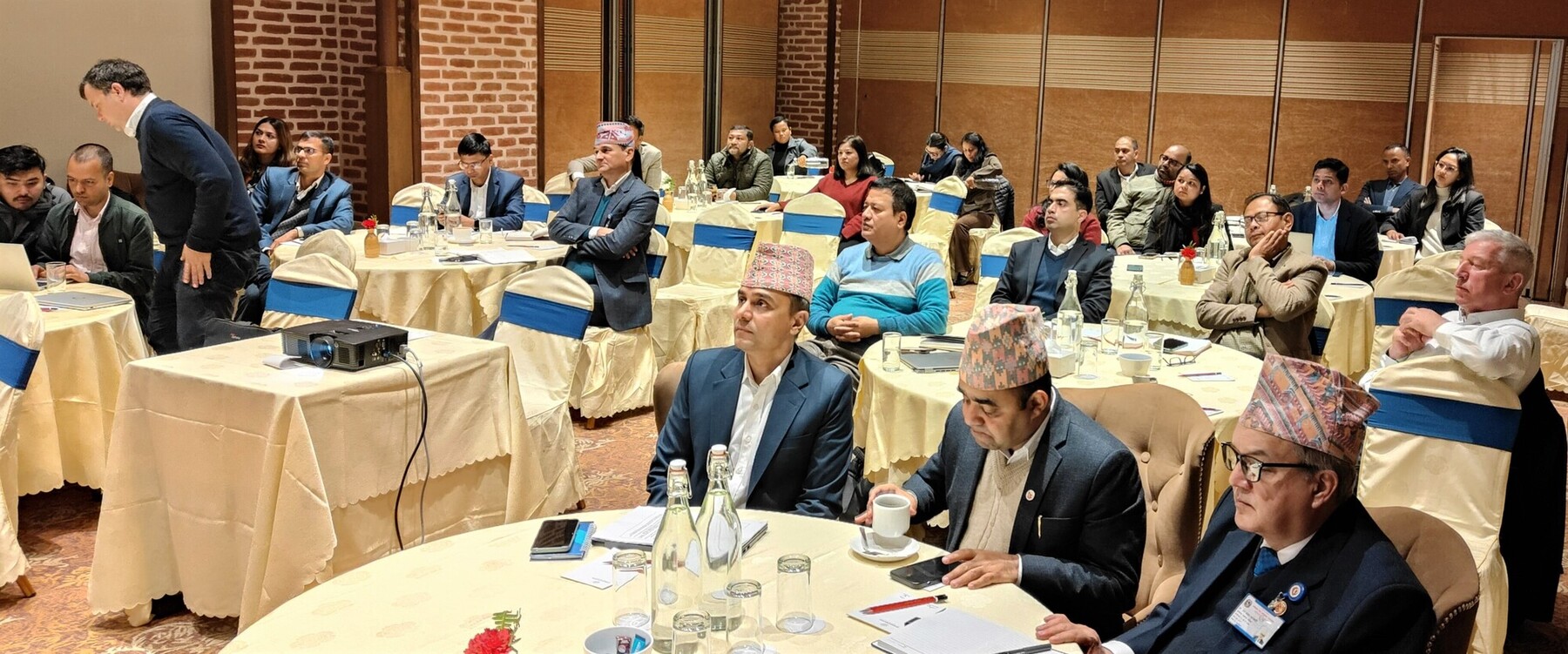HERD International has long been working on multiple studies on Antimicrobial Resistance (AMR). Everyone’s contribution counts toward tackling the drivers of AMR because it has become a major public health threat to the world today. In this blog, our research uptake officer, Bipul Lamichhane reflects on a recent community engagement activity on AMR conducted at a school by HERD International on the occasion of World Antimicrobial Resistance Week 2022.
Arriving at the school
As soon as our team entered the school gates, we could feel a different ambience inside the school. The school itself was located in quiet surroundings, far from any major road or crowd. It reminded some of us of our very own school days and the environment at our schools. Our team members were excited to visit ‘Pathik Gyan Niketan’, a school located in Chandragiri municipality in Kathmandu, with the aim to sensitize students and teachers on antimicrobials and antimicrobial resistance. We were there primarily to engage students and teachers in a two-hour educational session on antimicrobials and antimicrobial resistance.
Upon arrival, we were introduced to the teachers by interacting with them we learned about the school’s culture and aspirations. We were delighted to find out that this school prioritized the spiritual development of children and provided compulsory yoga and meditation classes to the students. After a short briefing with the teachers, we were taken to the hall where the teachers had arranged for the program to be conducted. We were keen to meet the students and could not wait for us to be introduced to them. When we entered the hall we found students patiently waiting for us to arrive. We could observe that most of the students were eager for the session and excited to greet new faces at their school. There was already a sense of cohesion and bonding between us, the students, and the teachers as soon as we started interacting with them.
Though HERD International has visited schools previously to provide awareness on AMR to school students, we were convinced that this was going to be an entirely new experience for the team. Our team did not know what to expect as previously we had only conducted such sessions among students enrolled in government schools and since this was a private school we knew that significant knowledge gaps would exist, but we did not know to what extent. We found that their level of knowledge was quite high and their access to resources and information was substantially higher than what we had initially expected.
Why the program?
AMR is a major global health threat and is predicted to be a major problem in the future if the present trends persist. This has become a critical issue across the world and demands the contribution of many key stakeholders, including the community. HERD International has been actively engaging with the community to deal with the problem of AMR from the community perspective and influence the community people’s KAP on antimicrobial use. We have also been partaking in various community engagement activities during World AMR Awareness Week for many years. This year, during World AMR Awareness Week, we organized a one-day school awareness program on antimicrobial resistance. We mainly targeted students for this program because we believe that aware students could influence antibiotic purchase and consumption decisions in their homes. Also, engaging students in antimicrobial awareness can also contribute to informed usage of antimicrobials by the future generation. Sensitizing students on AMR and making them think from a One Health approach encompassing human, animal and environmental health is crucial to control and preventing AMR and the social and economic burden imposed by it.
Antimicrobial Resistance (AMR), also referred to as the ‘Silent Pandemic,” threatens to impact millions of populations worldwide. It is estimated that by 2050, the number of deaths per year due to AMR could reach up to 10 million. The World Bank estimates that the economic burden due to AMR could lead to a cost of 1 trillion USD after 2030. The major contributing factor to this health crisis is the overuse/abuse of antimicrobials in health care and livestock maintenance due to their unregulated access. The situation is adverse in developing countries like Nepal due to the over-the-counter availability of drugs without prescription.
The exchange session

A total of 34 students and 4 teachers participated in our educational session, and they were also asked to take part in a short pre and post-evaluation survey before and after the delivery of the session. We found students to have partial knowledge of AMR. A simple understanding of microbes and their types i.e. bacteria, virus, fungus, and parasites were present among all students. Students from higher grades seemed to possess more information on AMR and some of them even used terms such as superbugs, mutations, and symbiosis during the discussion. However, the concept of one health was new to them.
The interaction with the students was far-reaching and comprehensive. Students seemed to be quite aware of the consequence of antimicrobial misuse and the social issues surrounding AMR. Access to the internet was the major source of information besides the curriculum for the students. Students said that social media such as YouTube were their go-to platforms whenever they need any new or additional information.
Despite their busy schedules, students and teachers participated in the program, which was a bit longer than anticipated due to extensive and in-depth discussions with the students. The educational program was very effective and rigorous. It was inevitable that some students from higher grades were more informed about antimicrobials, nevertheless, students from lower grades also participated well in the session and were not nervous or reluctant to ask a question. One female student stated, “I am happy that I participated in this program and got an opportunity to learn about antimicrobials from a different perspective and seek answers to my queries.”
Post session Experience
After the program, interested students and teachers were asked to deliver a short message regarding their knowledge, insights, feedback, and their experience of participating in the program through a video. We had expected that the students would be disinclined and hesitant to speak in front of the camera, but instead, we found the opposite to be true. The students were very active and not hesitant to speak in front of the camera at all. They shared their learnings, opinions, and experience of participating in the program in a separate room, where our team had set up the camera for video shooting. Our team was startled by how extrovert these students were and their willingness to participate and interact.
Both teachers and students said that they found the program to be very insightful and provided positive feedback to the team. A teacher stated, “More such programs are required because programs like these provide students with opportunities to learn new things that are important for behavioral change towards antimicrobials.” A few students mentioned that they felt lucky to be able to participate and stated that they were previously unaware of or had very limited knowledge of AMR. One male student said, “the session made me realize the urgency of AMR and its associated problems in the community and society.” Overall, it was a great learning opportunity for the teachers and students who participated in the session and also for the team.












Comments (0)
No comments found.